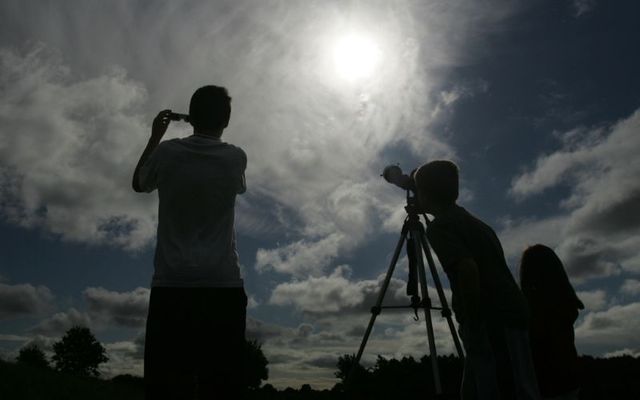The island of Ireland will be able to see a partial solar eclipse on Monday, April 8, according to experts.
A “small partial solar eclipse will be visible” on the island of Ireland on Monday, April 8, BBC Sky at Night Magazine reports.
“On 8 April, the penumbral shadow crosses western parts of the UK and Ireland, giving these areas a chance to see something of the eclipse event."
Going into more detail, The Sky Live says: "A Partial Eclipse will be visible from Dublin, Ireland on April 8, 2024.
"Only the first part of the eclipse will be visible from here because the Sun will set before the eclipse will reach its maximum phase.
"The eclipse will start at 19:55:51 local time."
Ireland last saw a partial eclipse on October 25, 2022, and before that, June 10, 2021.
(Images of the first recorded eclipse were carved into stone cairns at Loughcrew in Co Meath over 5,000 years ago, but one of the first eclipses, of the common era, was also recorded in Ireland, by an Irish monk on June 29, 512, in the Chronicle of Ireland.)
Meanwhile, NASA says the total solar eclipse on Monday will begin over the South Pacific Ocean and will cross North America, passing over Mexico, the US, and Canada.
Weather permitting, the first location in continental North America that will experience totality is Mexico’s Pacific coast at around 11:07 am PDT.
The path of the eclipse continues from Mexico, entering the United States in Texas, and traveling through Oklahoma, Arkansas, Missouri, Illinois, Kentucky, Indiana, Ohio, Pennsylvania, New York, Vermont, New Hampshire, and Maine. Small parts of Tennessee and Michigan will also experience the total solar eclipse.
The eclipse will enter Canada in Southern Ontario, and continue through Quebec, New Brunswick, Prince Edward Island, and Cape Breton. The eclipse will exit continental North America on the Atlantic coast of Newfoundland, Canada, at 5:16 pm NDT.
On March 28, the Niagara Region in Canada issued a State of Emergency as it prepares for thousands of people to visit the area to witness the eclipse.
NASA has further shared these tips on how to view the solar eclipse safely:
- View the Sun through eclipse glasses or a handheld solar viewer during the partial eclipse phases before and after totality.
- You can view the eclipse directly without proper eye protection only when the Moon completely obscures the Sun’s bright face – during the brief and spectacular period known as totality. (You’ll know it’s safe when you can no longer see any part of the Sun through eclipse glasses or a solar viewer.)
- As soon as you see even a little bit of the bright Sun reappear after totality, immediately put your eclipse glasses back on or use a handheld solar viewer to look at the Sun.




Comments